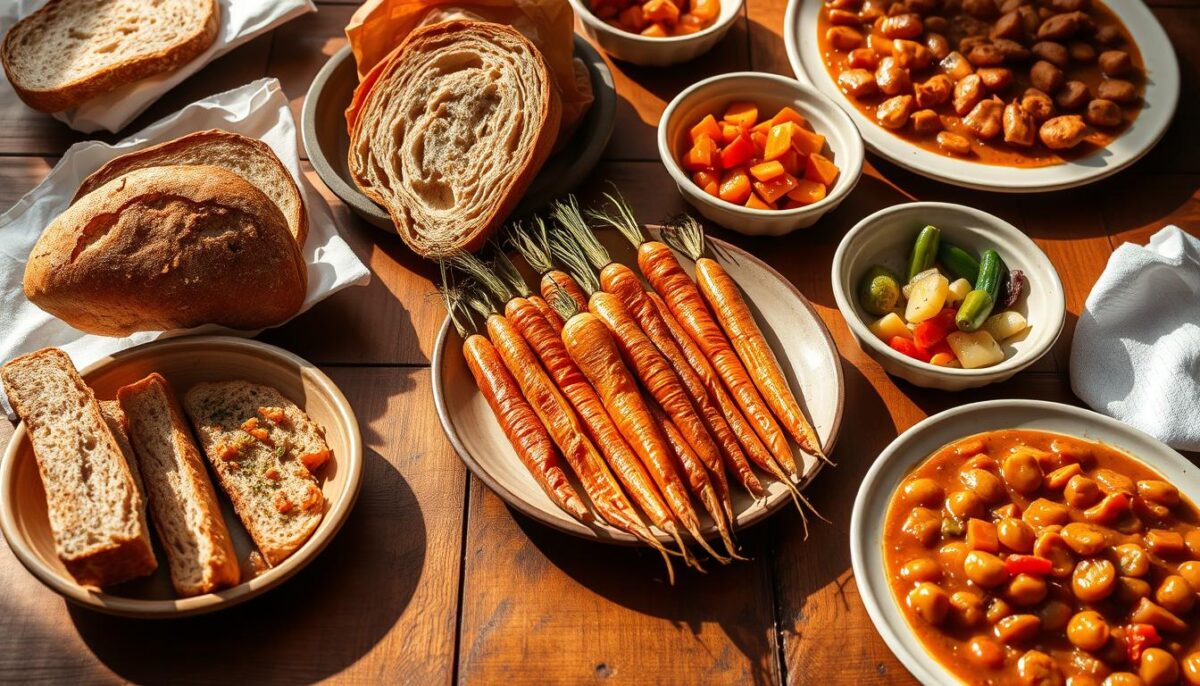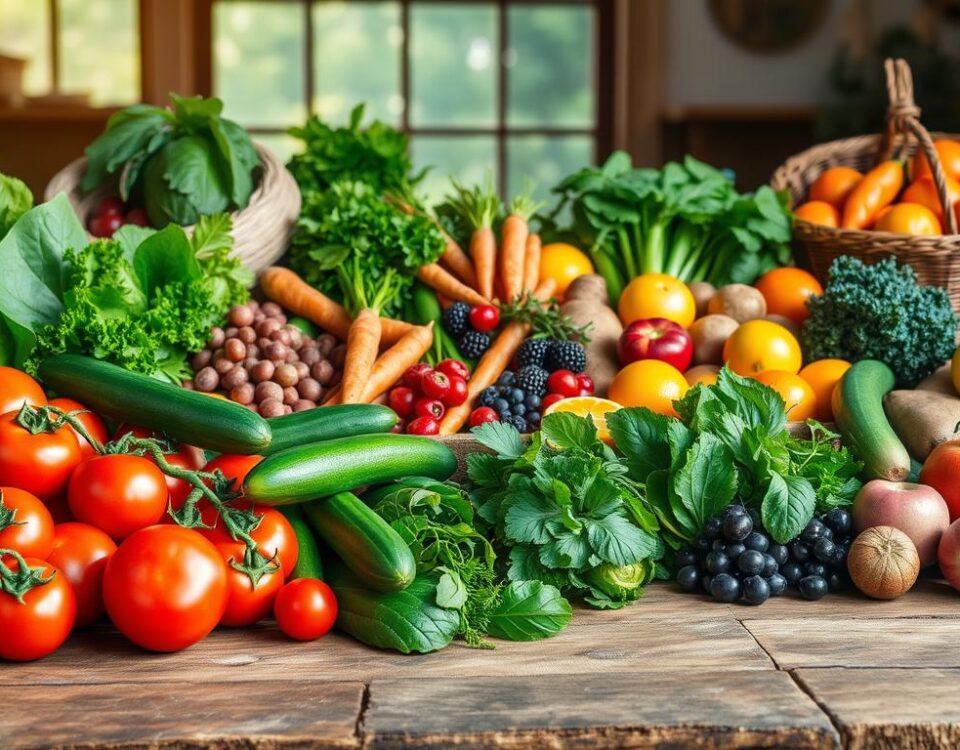
Cuban Flavors at Home: Ropa Vieja, Tostones & More
April 30, 2025
Exploring Swedish Food Culture: Meatballs, Fika & More
May 1, 2025There’s something magical about a dish that carries stories in every bite. For me, it started with my grandmother’s weathered cookbook, its pages stained with paprika and love. Years later, wandering the cobblestone streets of Budapest, I realized how deeply this stew connects people—to their roots, their memories, and the joy of sharing.
I’ll never forget the first time I tasted slow-cooked beef simmered with caramelized onions and smoky red pepper. It wasn’t just a meal—it felt like a warm embrace. That moment sparked my quest to blend old-world traditions with the ease of modern kitchens. After countless experiments (and a few happy accidents), I discovered how to honor authenticity without sacrificing practicality.
What makes this version special? It’s the balance—between patience and simplicity, bold spices and subtle sweetness. Fresh paprika isn’t just an ingredient here; it’s the soul of the dish. And those secret tweaks I picked up from a market vendor in Debrecen? They’ll transform your stovetop into a Central European hearth.
Key Takeaways
- Family traditions and European travels shaped this hearty, flavorful stew
- Quality beef and authentic paprika are non-negotiable for rich taste
- Traditional methods meet time-saving techniques for modern cooks
- Versatile enough for weeknights or special gatherings
- Secret tips elevate the dish from good to unforgettable
Introduction
What transforms simple ingredients into something unforgettable? For me, it’s the alchemy of sizzling onions in a pan, their golden edges whispering promises of depth. I still remember the vendor who taught me this truth at a Budapest market, her hands gesturing wildly as paprika dust swirled around us like edible confetti.
Let’s start where every great dish begins—with fresh foundations. Those humble onions aren’t just aromatics here; they’re flavor architects. Slice them thin, let them dance in oil over medium heat, and watch magic happen. And about that pepper? It’s not just spice—it’s the spark that wakes up the entire pot.
Here’s what I’ve learned through years of testing: salt isn’t a villain—it’s your secret conductor. A pinch here coaxes sweetness from vegetables, another there balances the richness of broth. But patience matters more than any single ingredient. Too high a heat, and flavors scorch. Too low, and they never sing.
Whether you’re new to cooking or own a drawer full of worn wooden spoons, this method works. You’ll need:
- 4 cups thinly sliced yellow onions
- 2 tsp freshly ground black pepper
- 1 tbsp coarse sea salt
- A heavy pot that loves steady heat
Ready? Let’s turn your kitchen into the heart of Central Europe—one perfectly caramelized onion at a time.
The Rich History Behind Hungarian Goulash
Steam rising from copper kettles at Stephansplatz market first taught me this dish’s soul. On a frostbitten December evening, vendors handed out clay cups of stew that warmed my gloved hands—and rewired my understanding of comfort food. The scent of toasted garlic tangled with woodsmoke, while ruby-red paprika stains on aprons told stories of generations.
![]()
Centuries-old recipes began as portable meals for herdsmen, simmered in cauldrons over open flames. What survived? The backbone of rich broth, though modern cooks now measure ingredients in precise cups rather than handfuls. My Budapest cooking mentor once whispered, “The difference between good and extraordinary? Twenty minutes more patience.”
I learned this truth beside her stove. Adding broth in stages—never all at once—builds complexity. Letting onions sweat until translucent, then browning meat in their sweetness. These details transform simple ingredients into heirloom flavors. Even today, I time each simmering phase with the same care she showed me.
That Christmas market magic lives on in every pot I make. The stew’s evolution mirrors Hungary itself: resilient, adaptable, yet fiercely proud of its roots. And when I stir in that final pinch of paprika, I still hear cobblestone echoes and clinking clay mugs.
Hungarian goulash recipe guide
My fingers still remember the weight of my first cast-iron pot – its seasoned surface whispering tales of meals yet to come. That’s where the alchemy happens: where fat transforms into liquid gold and hours melt tough cuts into velvet.
Authentic Flavor Secrets
Grandmothers across the Carpathian Basin agree – browning meat in batches makes all the difference. I learned to listen for the sizzle that signals perfect searing, creating crusty flavor pockets. Three tablespoons of fat might seem excessive, but it’s the foundation for that rich, glossy sauce we crave.
Here’s the game-changer: stew develops character through stages. Start with a screaming-hot pot, then dial down the heat. Let time work its magic as collagen dissolves into silk. My trick? Stir clockwise only – superstition meets science for even cooking.
Traditional Versus Modern Techniques
While purists insist on open-fire cooking, I’ve adapted methods for busy kitchens. A heavy Dutch oven mimics ancestral cauldrons, locking in warmth during those crucial simmering hours. Modern cooks can substitute lard with avocado oil, but never skip the paprika bloom – that 30-second spice toast awakens hidden depths.
Measurements matter more than you’d think. Two level tablespoons of caraway seeds? Perfect balance. Four cups broth instead of water? Depth amplified. Yet some rules bend beautifully – I’ve used slow cookers on hectic days with stunning results. The soul remains, even when methods evolve.
Essential Ingredients and Tools
I once watched a Budapest chef cradle paprika like precious gems, her fingers stained sunset-red. That reverence for raw materials shapes every great stew. Let’s unpack what truly matters in your kitchen arsenal.
Key Spices and Seasonings
Sweet paprika isn’t negotiable—it’s the heartbeat of flavor. Buy it in small batches and store in dark glass. For depth, combine ground caraway with fresh marjoram leaves. My trick? Toast whole spices in a dry pan, then grind them yourself. The difference punches through every bite.
Never underestimate your mixing bowl. I use wide ceramic ones for even spice distribution. Measure precisely—a leveled teaspoon here ensures balanced servings later. And that final pinch of salt? Add it just before serving to make flavors pop.
Selecting the Best Cut of Beef
Fat equals flavor here. Chuck roast in 2-3 pounds pieces becomes fork-tender after slow cooking. Avoid lean cuts—they turn stringy. I ask butchers for “well-marbled” sections, which melt into the broth like meaty velvet.
| Cut | Weight (lbs) | Cooking Time | Best For |
|---|---|---|---|
| Chuck Roast | 2.5-3 | 2.5 hours | Rich texture |
| Short Rib | 2-2.5 | 3 hours | Deep flavor |
| Brisket | 3-4 | 4 hours | Large batches |
Pair your stew with simple sides—buttered egg noodles or crusty bread. For six servings, use a 6-quart pot and taste as you go. Remember: the right tools and patience transform ingredients into legacy.
Step-by-Step Cooking Process
I still judge every kitchen by its sizzle—that crisp chorus of onions hitting hot oil. When my dutch oven whispers that first crackle, I know we’re building flavor foundations. Let’s turn up the heat together.

Cooking the Onions and Browning the Meat
Slice two large yellow onions thin—paper moons ready to caramelize. Warm 3 tbsp oil in your dutch oven over medium-low. Add onions with a pinch of salt. Stir every 90 seconds for 25 minutes until golden-brown. This patience pays in sweetness.
Now the beef. Cut 2.5 lbs chuck roast into 1.5″ cubes. Pat dry—steam is the enemy of crust. Working in batches, add beef to the pot without crowding. Sear 3 minutes per side until mahogany-colored. Those crispy bits? Flavor gold.
| Beef Cut | Batch Size | Sear Time | Result |
|---|---|---|---|
| Chuck | 1 lb | 6 min | Rich crust |
| Short Rib | 0.75 lb | 8 min | Deep browning |
| Brisket | 1.25 lb | 7 min | Even sear |
Simmering to Perfection
Return all meat to the pot. Stir in 2 tbsp hungarian sweet paprika and 1 tsp crushed caraway seeds—toast them 30 seconds until fragrant. Pour 4 cups beef broth, scraping up those browned bits. Now reduce heat to low—the simmer should barely ripple the surface.
Cover partially. Set your timer for 90 minutes. At 45 minutes, stir in 1 diced red pepper. At 75 minutes, add cubed potatoes. Taste at 90—if the beef yields to a nudge, it’s time. Serve with a final dusting of paprika.
Three pro tips I’ve learned:
- Never rush the onion stage—caramelization can’t be hurried
- Toast spices in residual meat fat for maximum flavor bloom
- Skim excess oil after cooking, not during—those lipids carry taste
Tips, Tricks, and Variations for the Perfect Bowl
I discovered the beauty of recipe reinvention during a meatless Monday experiment. Swapping beef for mushrooms transformed my understanding of this classic dish. Let me share how to make it your own.

Plant-Powered Possibilities
Mixed mushrooms create meaty texture without compromise. Try cremini for earthiness, shiitake for chew, and portobello for substance. Sauté them until golden before adding to the pot. For extra depth, stir in 1 tbsp tomato paste during browning.
Don’t underestimate potatoes. Their starch thickens the broth naturally. Cube them small for quicker cooking, or leave chunks large for hearty bites. Either way, they soak up spices like flavor sponges.
Spice Symphony
Caraway seeds walk a tightrope between bold and overwhelming. I use ¾ tsp for subtle licorice notes. Toast them with paprika to mellow sharp edges. For smoky undertones, add a pinch of smoked salt during the final simmer.
“Seasoning isn’t a rulebook—it’s a conversation between pot and palate.”
Oven versus stovetop changes the game. Low-and-slow baking creates even heat distribution, while stovetop cooking offers more control. See how they compare:
| Method | Temperature | Time | Result |
|---|---|---|---|
| Dutch Oven | 325°F | 2.5 hours | Velvety texture |
| Stovetop | Low Simmer | 2 hours | Intense flavor |
| Slow Cooker | High | 4 hours | Hands-off ease |
My golden timing rule? Check tenderness every 30 minutes after the first hour. Meat (or mushrooms) should yield without dissolving. Adjust heat as needed—patience rewards with perfect consistency every time.
Classic Side Dishes and Serving Suggestions
The right accompaniments turn a hearty stew into a symphony of textures. I learned this balancing act from a chef who insisted, “Sides shouldn’t compete—they should complete.” Let’s explore pairings that elevate every spoonful.

Pairing with Egg Noodles and Crusty Bread
Buttered egg noodles act as velvet canvases for rich sauces. I toss mine with a teaspoon of caraway seeds for subtle crunch. Crusty sourdough? Essential for swiping up every last drop—its tangy notes cut through the stew’s richness perfectly.
Roasted vegetables add vibrancy. Try honey-glazed carrots or charred bell peppers. Their natural sweetness mirrors the stew’s depth while adding nutritional balance. For six servings, I roast two cups of diced roots with a tablespoon of olive oil.
Garnishing for Extra Flavor
A final flourish transforms presentation. My go-to trio:
- Fresh parsley (1 teaspoon chopped per bowl)
- Toasted pumpkin seeds for nutty crunch
- A drizzle of chili-infused oil
Diced red bell peppers add color contrast, while pickled vegetables offer bright acidity. Remember: garnishes should enhance, not overwhelm. As my mentor advised, “Let the stew remain the star—everything else is its supporting cast.”
Conclusion
Cooking is more than following steps—it’s about weaving tradition into every stir and sprinkle. From selecting well-marbled beef to that final dusting of fresh parsley, each choice shapes this dish’s soul. Remember: a single bay leaf simmered slowly works wonders, while crusty bread turns leftovers into tomorrow’s feast.
Don’t hesitate to make it yours. Swap in smoked paprika for heat, or pair it with Sunday roast vegetables for heartier meals. Just keep that paprika tin within arm’s reach—it’s your flavor compass.
I’d love to hear your stories! Did the bay leaves surprise you? Did you dunk extra bread into the broth? Share your twists—every pot adds new chapters to this timeless tale.
Thank you for letting me guide your kitchen adventures. Now, ladle yourself a bowl, breathe in those spices, and taste history made delicious. Some dishes don’t just feed—they stay with you.
FAQ
What’s the secret to getting that rich, smoky flavor?
I swear by using Hungarian sweet paprika as the base. Toasting it lightly in oil before adding broth unlocks its depth. A dash of caraway seeds and a bay leaf also add earthy layers without overpowering the dish.
Can I use a slow cooker instead of a Dutch oven?
Absolutely! I’ve made this stew both ways. If using a slow cooker, brown the meat and onions first for that caramelized base. Then let it simmer on low for 6-8 hours. The beef becomes melt-in-your-mouth tender.
What cut of meat works best?
My go-to is chuck roast—it’s marbled with fat, which keeps the meat juicy during long cooking. Trim excess fat, but leave some for flavor. Shank or short ribs also work if you prefer a richer taste.
How do I fix it if the stew tastes too spicy?
Balance it with a spoonful of sour cream or a drizzle of honey. I’ve also added diced potatoes or carrots to mellow the heat. Taste as you go, and adjust the paprika levels next time!
What sides pair well with this dish?
I love serving it over egg noodles or with crusty bread to soak up the broth. A crisp cucumber salad or pickled vegetables cut through the richness. Don’t skip the fresh parsley garnish—it adds brightness!
Can I make a vegetarian version?
Yes! Swap beef for portobello mushrooms or lentils. Use smoked paprika and a splash of soy sauce for umami. Root vegetables like parsnips or turnips add heartiness. It’s just as cozy as the classic.



